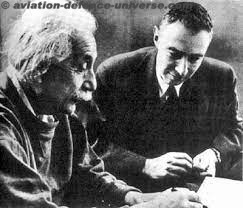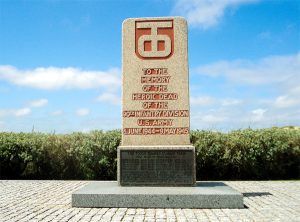
By Sangeeta Saxena
New Delhi. 06 June . Today in 1944 the U.S. First Army opened a general offensive to break out of the hedgerow area of Normandy, France. A city which is synonymous with war and world history , a city which will always be said to have played an important role in creating the new world order and a battle which is considered to be the most decisive battle of the European Theater in World War II, Normandy invasion is remembered for success of the use of strategic deception.
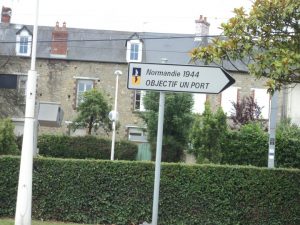 The culmination of nearly two years of planning, the invasion owed much of its success to the strategy of keeping enemy guessing . “D-Day,” as a term at the time, appeared in military planning documents to keep German spies from becoming suspicious of Allied movements. The true name of the invasion was Operation Overlord.
The culmination of nearly two years of planning, the invasion owed much of its success to the strategy of keeping enemy guessing . “D-Day,” as a term at the time, appeared in military planning documents to keep German spies from becoming suspicious of Allied movements. The true name of the invasion was Operation Overlord.
Operation Overlord was the codename for the Allied invasion of northwest Europe. The assault phase, or the establishment of a secure foothold, was known as Operation Neptune. Operation Neptune began on D-Day (6 June 1944) and ended on June 30, when the Allies had established a firm foothold in Normandy. Operation Overlord also began on D-Day, and continued until Allied forces crossed the River Seine on August 19.
The landings were conducted in two phases: an airborne assault landing of 24,000 British, American, Canadian and Free French airborne troops shortly after midnight, and an amphibious landing of Allied infantry and armoured divisions on the coast of France starting at 6:30 AM. There were also decoy operations under the codenames Operation Glimmer and Operation Taxable to distract the German forces from the real landing areas.
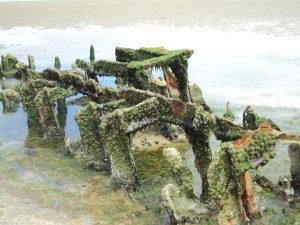 Utah Beach was the code name for the right flank, or westernmost, of the Allied landing beaches. Utah was added to the invasion plan toward the end of the planning stages, when more landing craft became available. The landing was planned in four waves. The first consisted of 20 Higgins boats or LCVPs, each carrying a 30-man assault team from the 8th Infantry Regiment. The second wave consisted of another 32 Higgins boats with additional troops of the two assault battalions, some combat engineers, and also eight naval demolition teams that were to clear the beach of underwater obstacles.
Utah Beach was the code name for the right flank, or westernmost, of the Allied landing beaches. Utah was added to the invasion plan toward the end of the planning stages, when more landing craft became available. The landing was planned in four waves. The first consisted of 20 Higgins boats or LCVPs, each carrying a 30-man assault team from the 8th Infantry Regiment. The second wave consisted of another 32 Higgins boats with additional troops of the two assault battalions, some combat engineers, and also eight naval demolition teams that were to clear the beach of underwater obstacles.
The third wave, timed for H plus 15 minutes, contained eight more Higgins boats with DD tanks. It was followed within 2 minutes by the fourth wave, mainly detachments of the 237th and 299th Combat Engineer Battalions, to clear the beaches between high- and low-water marks.
Two hours before the main invasion force, a raiding party swam ashore from Landing Craft Assault at Îles Saint-Marcouf, thought to be a German observation post. It was unoccupied. The German forces responsible for the defense of the beach were elements of the 709th Infantry Division, commanded by General lieutenant Karl-Wilhelm von Schlieben, and the 352nd Infantry Division, commanded by Generalleutnant Dietrich Kraiss.
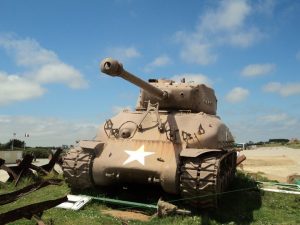 By the end of D-Day, some 23,250 troops had safely landed on the beach, along with 1,700 vehicles. Only about 200 casualties were recorded during the landings. Utah Beach, about 3 miles (5 km) long, was the westernmost of the five landing beaches, located between the villages of Pouppeville and La Madeleine, which became the right flank anchor of the allied offensive along the left bank (western bank) of the Douve River estuary.
By the end of D-Day, some 23,250 troops had safely landed on the beach, along with 1,700 vehicles. Only about 200 casualties were recorded during the landings. Utah Beach, about 3 miles (5 km) long, was the westernmost of the five landing beaches, located between the villages of Pouppeville and La Madeleine, which became the right flank anchor of the allied offensive along the left bank (western bank) of the Douve River estuary.
The German sector code was W5. Despite being substantially off course, the US 4th Infantry Division (part of VII corps) landed with relatively little resistance, in stark contrast to Omaha Beach, where the fighting was fierce.
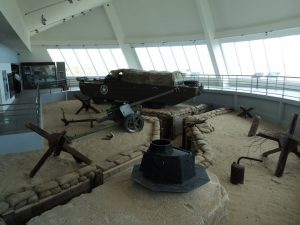 “Soldiers, Sailors and Airmen of the Allied Expeditionary Force! You are about to embark upon the Great Crusade, toward which we have striven these many months. The eyes of the world are upon you. The hopes and prayers of liberty-loving people everywhere march with you. In company with our brave Allies and brothers-in-arms on other Fronts, you will bring about the destruction of the German war machine, the elimination of Nazi tyranny over the oppressed peoples of Europe, and security for ourselves in a free world,” said Dwight David Eisenhower, the Supreme Commander, Allied forces in Europe during World War II.
“Soldiers, Sailors and Airmen of the Allied Expeditionary Force! You are about to embark upon the Great Crusade, toward which we have striven these many months. The eyes of the world are upon you. The hopes and prayers of liberty-loving people everywhere march with you. In company with our brave Allies and brothers-in-arms on other Fronts, you will bring about the destruction of the German war machine, the elimination of Nazi tyranny over the oppressed peoples of Europe, and security for ourselves in a free world,” said Dwight David Eisenhower, the Supreme Commander, Allied forces in Europe during World War II.
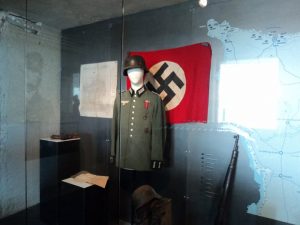 Addressing the men before the invasion of Normandy, he added: “Your task will not be an easy one. Your enemy is well trained, well equipped and battle hardened. He will fight savagely. But this is the year 1944! Much has happened since the Nazi triumphs of 1940-41. The United Nations have inflicted upon the Germans great defeats, in open battle, man-to-man. Our air offensive has seriously reduced their strength in the air and their capacity to wage war on the ground. Our Home Fronts have given us an overwhelming superiority in weapons and munitions of war, and placed at our disposal great reserves of trained fighting men. The tide has turned! The free men of the world are marching together to Victory!”
Addressing the men before the invasion of Normandy, he added: “Your task will not be an easy one. Your enemy is well trained, well equipped and battle hardened. He will fight savagely. But this is the year 1944! Much has happened since the Nazi triumphs of 1940-41. The United Nations have inflicted upon the Germans great defeats, in open battle, man-to-man. Our air offensive has seriously reduced their strength in the air and their capacity to wage war on the ground. Our Home Fronts have given us an overwhelming superiority in weapons and munitions of war, and placed at our disposal great reserves of trained fighting men. The tide has turned! The free men of the world are marching together to Victory!”
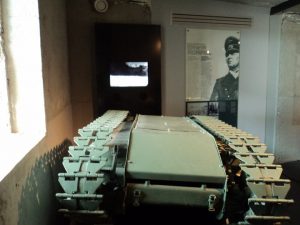 By the end of D-Day, some 23,250 troops had safely landed on the beach, along with 1,700 vehicles. Only about 200 casualties were recorded during the landings. Utah Beach, about 3 miles (5 km) long, was the westernmost of the five landing beaches, located between the villages of Pouppeville and La Madeleine, which became the right flank anchor of the allied offensive along the left bank (western bank) of the Douve River estuary.
By the end of D-Day, some 23,250 troops had safely landed on the beach, along with 1,700 vehicles. Only about 200 casualties were recorded during the landings. Utah Beach, about 3 miles (5 km) long, was the westernmost of the five landing beaches, located between the villages of Pouppeville and La Madeleine, which became the right flank anchor of the allied offensive along the left bank (western bank) of the Douve River estuary.
The German sector code was W5. Despite being substantially off course, the US 4th Infantry Division (part of VII corps) landed with relatively little resistance, in stark contrast to Omaha Beach, where the fighting was fierce.
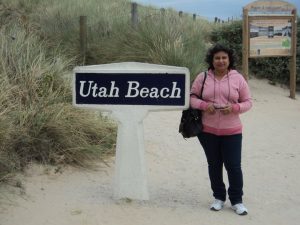 Twelve Allied nations provided fighting units that participated in the invasion, including Australia, Canada, Belgium, France, Czechoslovakia, Greece, New Zealand, the Netherlands, Norway, Poland, the United Kingdom, and the United States.
Twelve Allied nations provided fighting units that participated in the invasion, including Australia, Canada, Belgium, France, Czechoslovakia, Greece, New Zealand, the Netherlands, Norway, Poland, the United Kingdom, and the United States.
This journalist was in Normandy battle tracking in June 2013.

































